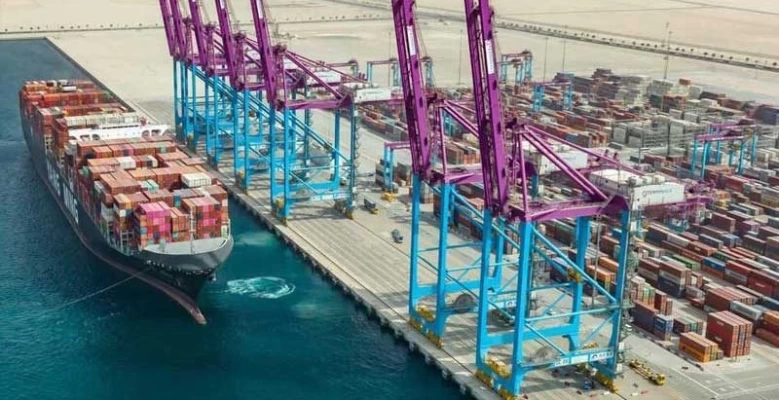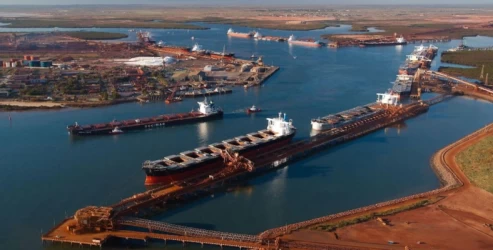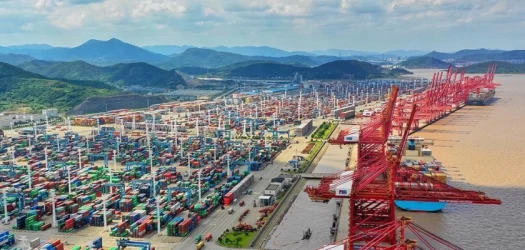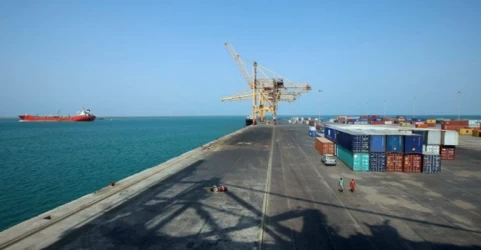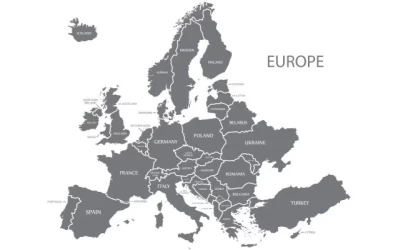Sea transportation in Hamad port
Hamad Port, located in the Al Wakrah region of Qatar, is the largest commercial port in the country. Opened in 2016, the port has quickly become a vital hub for maritime trade in the Middle East, enhancing Qatar’s capacity for both import and export operations. With state-of-the-art facilities, advanced technology, and strategic planning, Hamad Port plays a crucial role in the country’s economic diversification efforts, aligning with the objectives of Qatar’s National Vision 2030.
Overview of Hamad Port
Hamad Port is one of the most technologically advanced ports in the region. It spans over 28.5 square kilometers and can handle up to 7.5 million twenty-foot equivalent units (TEUs) annually. It is designed to cater to the country's growing economic needs and support its long-term objectives of becoming a logistics and trade hub. Hamad Port has multiple terminals, including container, general cargo, and vehicle terminals, making it capable of handling a diverse range of goods.
Key Features:
- Container Terminal: Capable of handling the largest container ships in the world, the terminal is equipped with 12 ship-to-shore cranes and can process 2 million TEUs per year.
- General Cargo Terminal: This terminal manages the import and export of a variety of goods, including machinery, equipment, and bulk commodities.
- Automobile Terminal: With the capacity to process 500,000 vehicles annually, this terminal handles the import and export of cars and other motor vehicles.
- Advanced Technology: The port integrates cutting-edge technology like automated cranes and digital tracking systems to ensure smooth and efficient operations.
Role in Maritime Transport and Trade
Hamad Port significantly enhances Qatar’s maritime transport capabilities, connecting the country to over 100 seaports worldwide. It reduces the nation's reliance on regional ports and ensures self-sufficiency in managing its trade routes.
1. Economic Impact
Hamad Port has been instrumental in increasing Qatar’s trade volume. It has significantly boosted the import and export of goods, including raw materials, construction materials, and consumer products. The port supports Qatar’s expanding energy sector, with dedicated facilities for exporting liquefied natural gas (LNG), petroleum products, and chemicals.
2. Diversification of Trade Routes
One of the key achievements of Hamad Port is its ability to bypass regional trade bottlenecks. The port ensures a direct line of maritime transportation between Qatar and major international markets in Asia, Europe, and the Americas. This reduces the cost and time of transporting goods, improving Qatar’s global trade competitiveness.
3. Logistics Hub
Hamad Port is positioned as a major logistics hub in the Gulf region. Its advanced infrastructure supports not only trade within the Middle East but also acts as a transshipment point for goods moving between Europe and Asia. Qatar Free Zones Authority is adjacent to the port, providing incentives for businesses and investors to set up operations, further enhancing Qatar’s role as a logistics center.
Challenges in Maritime Transport
Despite its significant achievements, Hamad Port faces several challenges in maritime transport. The fluctuating global economy, regional political tensions, and the ongoing adaptation to new environmental regulations pose challenges for the port's operational efficiency.
1. Political Tensions
Regional disputes, such as the 2017 blockade by neighboring Gulf countries, demonstrated the vulnerability of maritime trade routes in politically volatile regions. However, Hamad Port’s establishment allowed Qatar to maintain its trade routes by diversifying its partnerships and creating new shipping routes.
2. Environmental Concerns
The shipping industry faces growing pressure to reduce its carbon footprint. Hamad Port has committed to sustainable practices, including implementing energy-efficient systems and considering future plans for greener fuel alternatives.
Future Outlook
The future of Hamad Port looks promising, with several expansion projects in the pipeline. The development of more terminals and the integration of newer technologies like AI and blockchain are expected to further boost operational efficiency. The port is also working on becoming more eco-friendly by investing in renewable energy and reducing carbon emissions, aligning with global maritime trends toward sustainability.
Hamad Port is not only a critical infrastructure asset for Qatar but also a symbol of the country’s ambition to be a leader in international trade and logistics. With continued investments and strategic planning, Hamad Port is poised to play a vital role in shaping the future of maritime transport in the region.
Conclusion
Hamad Port stands as a monumental achievement for Qatar’s maritime transport sector. It has facilitated the country’s economic growth, diversified trade routes, and positioned Qatar as a significant player in the global logistics landscape. As the port continues to expand and adopt more sustainable practices, it is set to remain a cornerstone of Qatar’s international trade network, driving the nation’s ambitions on the global stage.
If you have any specific questions or need further assistance, feel free to ask!

